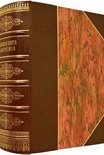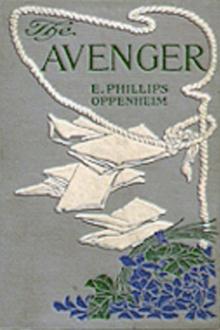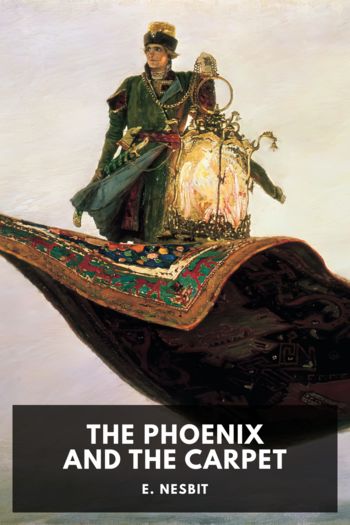Hitler's Terror Weapons, Brooks, Geoffrey [cat reading book .txt] 📗

Book online «Hitler's Terror Weapons, Brooks, Geoffrey [cat reading book .txt] 📗». Author Brooks, Geoffrey
Heisenberg completed his assignment within two months, and on 6 December 1939 he submitted his findings in the first of two pioneering papers, G-39 The Possibility of Obtaining Energy from Fission in Uranium38.
Throughout the Second World War the spectre of a German atom bomb haunted many people, but from the outset Heisenberg made no attempt to disguise the possibility that one could be built.
“If a chain reaction is possible, then the bomb is possible. Its intensity would depend on the rate of liberation of energy before the chain reaction collapsed,”
he advised the Heereswaffenamt in his paper. As part of the deliberate process to denigrate the German nuclear project, various historians have stated that the Germans appear not to have considered the question of the fast fission chain reaction. The official British UKAEA historian Margaret Gowing39 added for good measure that the critical size of the U235 bomb appeared not to have been investigated either. Piecemeal transcripts of the German physicists’ secretly tape-recorded private conversations in internment at Farm Hall, England, in 1945 were included by General Leslie Groves, head of the Manhattan Project, in his book40 published in 1962. Following the release of the full documentation by the London Public Record Office in February 1992, it became apparent that Groves had lied when reporting what was supposed to have been said in these conversations. Groves stated that the transcripts proved how Heisenberg
“had not thought of using the bomb designs we had used: ours took advantage of fast neutrons … the Germans thought they would have to drop a whole reactor.”
In fact Heisenberg was recorded in conversation as saying in 1945:
“I knew it could be done with U235 using fast neutrons. That’s why U235 alone can be used as an explosive. They can never make an explosive with slow neutrons, not even with the heavy water reactor.”
The purpose of Groves’ lie was to pervert history by proving falsely that there never could have been a German atom bomb because the top scientist did not know the principle. This had to be done because a small atom bomb actually had been built and tested by Germany.
In his pioneering paper of December 1939 Heisenberg spoke of “enrichment”. Natural uranium consists essentially of two isotopes. 99.3% of the material is U238. This isotope captures free neutrons in the uranium, and this is why natural uranium cannot explode. The ‘fissile’ isotope U235 exists in natural uranium in the proportion of 0.7%. If the ratios can be changed, and the major isotope physically reduced in the material, then neutrons will be more free to act on the U235 atoms. If the material is sufficiently rich in U235 atoms, say above 50%, then it can be arranged for an explosive chain reaction to occur, although even 7% will be sufficient for an explosion of some sort.
In his report Heisenberg explained:
“An increase in temperature results from enriching the U235 isotope. If the U235 were to be enriched sufficiently to obtain a temperature corresponding to a neutron energy of 3.5 million degrees C, … the mass for the release of all available fissile atoms at once, would be: R=10∏ l cms = 31.41 cms.
“This explosive transformation of the U235 atoms can only occur in almost pure U235, because the capture bands of the U238 isotopes, even when present in reduced quantities, still absorb the neutrons.”
This is not a formal expression of critical size, but merely a general statement for discussion based on the idea that a fast fission atom bomb is possible provided one can obtain huge amounts of the U235 isotope. In Heisenberg’s equation, the unknown element is l, the diffusion length or mean free path. This term is the mean distance travelled by a neutron between release from an atom at fission to absorption and fission in another U235 atom. It can be a variable: the American physicists, when first putting their minds to the problem, came up with estimates of critical mass ranging from Feyman’s 50 kilos to Robert Oppenheimer’s 100 kilos, and the Americans had far better tools at their disposal for making the measurements than Heisenberg.
The Implosion Method
In the implosion method of detonating an atom bomb, the bomb core is a subcritical mass surrounded by a uniform layer of high explosive. When the HE detonates, a massive uniform pressure of millions of pounds p.s.i. is created which compresses the core material to a supercritical density, thus causing an implosion. Obviously, since the fissile material is compressed into a much smaller volume, the diffusion length is much reduced. If it were to be reduced by a factor of three, i.e. uniformly compressed by the explosion to a third of its original volume, then the critical mass required for implosion is smaller by the power of nine. This might have put U235 within Germany’s capabilities with a stupendous investment and the help of the electrical giants. The diffusion length is a variable depending on the quality of material and other factors. The more efficient the implosive force for the compression, the less U235 bomb material needed.
A crucial question is whether Germany had an effective implosion fuse in 1939. It is claimed that they were close to it, and by 1941 had made such advances in the technology of implosion fuses that they were already working on an ultra-violet type. Sources allege that an efficient implosion fuse which could set off all detonators around the bomb sphere at the speed of light was invented by Prof. (Ing) Friedrich Lachner in Vienna pre-war and a model exhibited at the Wiener Technische Hochschule (University) to





Comments (0)